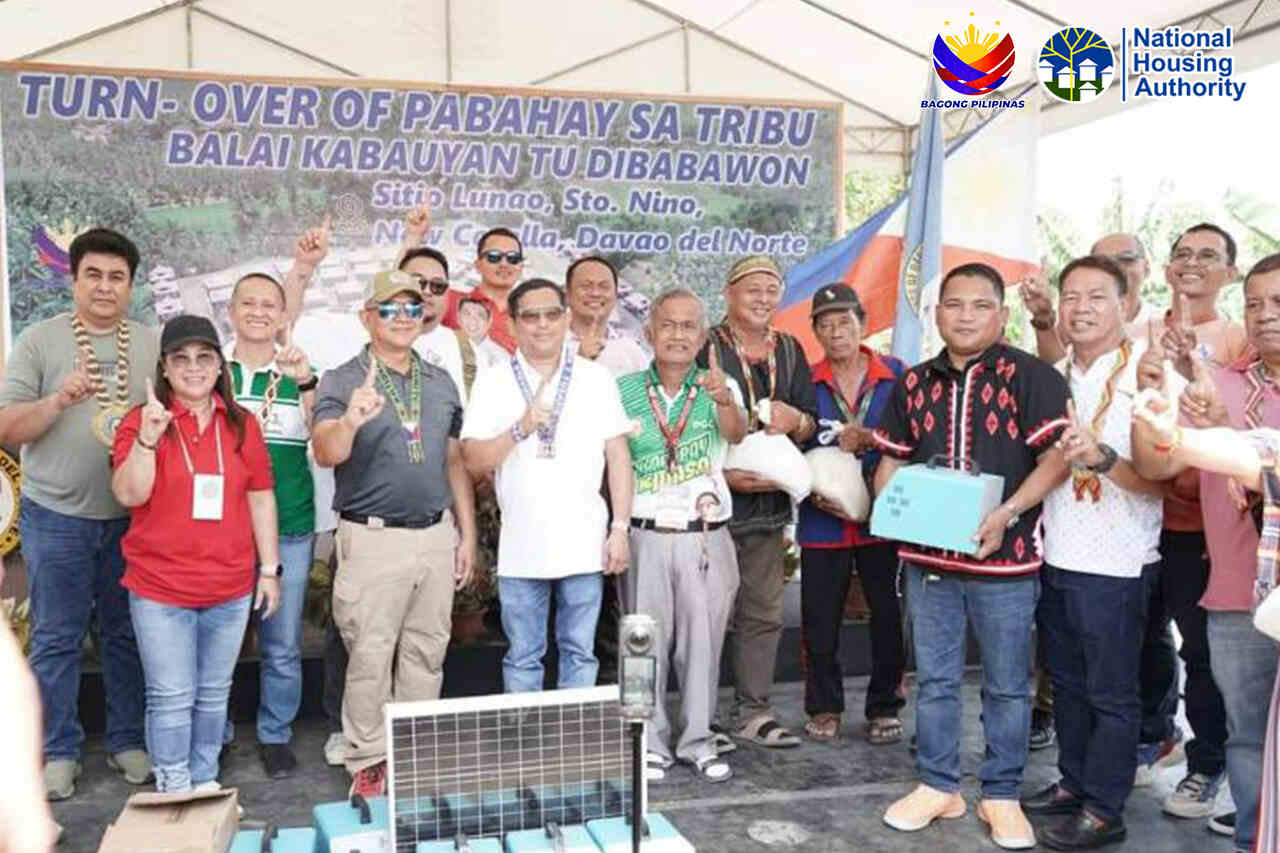The Housing Assistance Program for Indigenous Peoples (HAPIP) was established by the National Housing Authority (NHA) to provide safe, secure, and culturally appropriate shelter solutions for Indigenous Cultural Communities/Indigenous Peoples (ICCs/IPs) in the Philippines. Rooted in the government’s commitment to inclusive development, the program aligns with key legal mandates such as the Indigenous Peoples Rights Act (IPRA) or Republic Act No. 8371, and the National Shelter Program, recognizing the IPs’ right to ancestral domains and adequate housing. It aims to address historical neglect and social inequalities by providing targeted housing assistance to empower IP communities while preserving their identity and way of life.
Understanding HAPIP is vital because it underscores the government’s efforts to bridge the housing gap for marginalized groups and uphold social justice. This program not only supports the welfare of indigenous families but also promotes participatory governance by engaging LGUs, the National Commission on Indigenous Peoples (NCIP), and the IP communities themselves. Knowing about this initiative equips us with a deeper appreciation of indigenous rights, the importance of culturally sensitive housing development, and the role of collaborative governance in nation-building. This guide will walk you through everything you need to know about HAPIP—from its objectives, funding, and project implementation, to how to apply and who is eligible for the program.
Program Components

The program covers two major components:
- Land Development:
- Earthworks
- Roadworks
- Drainage and sewerage systems (including individual septic tanks)
- Water distribution or communal water facilities
- Distribution system for power supply, including provisions for solar lighting
- Housing Construction:
- Core housing units designed according to IP needs and cultural practices
- Flexible housing designs adhering to BP 220 minimum standards
Features and Benefits
The program offers numerous features and benefits designed to address the needs of its target beneficiaries:
Features:
Some of the key features of the NHA HAPIP include:
- Culturally Appropriate Housing: The program allows flexible housing and land development designs that respect the traditions, practices, and lifestyle of Indigenous Peoples, ensuring that homes are suited to their unique cultural identity.
- Community-Based Implementation: HAPIP is implemented in close coordination with Local Government Units (LGUs), the National Commission on Indigenous Peoples (NCIP), and the IP community, promoting participatory planning and localized decision-making.
- Integrated Support Structure: Through the Local Inter-Agency Committee (LIAC), the project is closely monitored to ensure quality implementation, transparency, and accountability in all stages—from planning to turnover.
Benefits:
It offers:
- Improved Living Conditions: Beneficiaries gain access to safe, decent, and secure housing that meets national standards while addressing their specific cultural and social needs.
- Inclusive Development and Empowerment: The program empowers IP communities by involving them in planning, beneficiary selection, and cost recovery arrangements, fostering a sense of ownership and responsibility.
- Access to Basic Services and Infrastructure: HAPIP includes land development components such as roads, drainage, water systems, and electricity—helping improve overall quality of life and enabling community growth.
Who Can Benefit from HAPIP?
The program is designed to support target Indigenous Cultural Communities/Indigenous Peoples (ICCs/IPs) who are in need of decent housing and reside within ancestral domains or lands. Qualified beneficiaries must meet the following criteria:
- Must belong to a recognized Indigenous Cultural Community/Indigenous Peoples (ICC/IP) group certified by the NCIP.
- Must be part of a validated list of project beneficiaries as endorsed by the IP community and LGU.
- Must not own any decent, habitable, and accessible residential property.
- Must be a permanent resident of the ancestral domain or area where the project is to be implemented.
- Must comply with the requirements set under the Free, Prior, and Informed Consent (FPIC) process.
- Must be residing in:
- Remote or disadvantaged communities
- Ancestral domains or lands
- Areas exposed to displacement due to disasters, infrastructure projects, or conflicts
- Must be willing to participate in community planning, implementation, and cost recovery arrangements, if applicable.
Eligible beneficiaries are selected in coordination with the NCIP, the LGU, and the IP community, following the FPIC guidelines.
What is the FPIC Guidelines
The Free, Prior, and Informed Consent (FPIC) process is a critical component of the NHA HAPIP, as it ensures that all housing initiatives within ancestral domains respect the rights and decisions of IP communities. It guarantees that the ICCs/IPs are fully informed and freely give their consent before any development project begins.
The key FPIC guidelines for HAPIP include:
- Compliance with IPRA Law: The FPIC process must strictly follow Section 59 of Republic Act No. 8371 or the Indigenous Peoples Rights Act (IPRA), which mandates that no project shall be implemented in ancestral domains without the genuine consent of the IPs concerned.
- Collaboration with NCIP: The FPIC process must be conducted in close coordination with the National Commission on Indigenous Peoples (NCIP), which is tasked with facilitating, monitoring, and validating the conduct of FPIC proceedings.
- Social Preparation Activities: The LGU, together with NHA and NCIP, must conduct comprehensive social preparation activities such as consultations, orientations, and community assemblies to inform the IP community about the project scope, impact, benefits, and terms of implementation.
- Validation Process: As per NCIP Administrative Order No. 3, s. 2012, a structured validation process must be followed to document and confirm the community’s consent, including the signing of necessary FPIC resolutions or agreements.
- Documentation and Submission: All FPIC documents — including resolutions, minutes of meetings, attendance sheets, and consent agreements — must be compiled and submitted as part of the project requirements to the NHA and concerned agencies.
Through this FPIC process, HAPIP also ensures that IPs are empowered decision-makers in development efforts affecting their communities, upholding their cultural integrity and ancestral rights.
Required Documents
To avail of the NHA HAPIP, the following documentary and procedural requirements must be submitted and complied with:
- Formal written request from the Local Government Unit (LGU) for project assistance.
- Certification from the NCIP identifying the project site as part of the ancestral domain.
- List of validated beneficiaries endorsed by the IP community and the LGU.
- Approved land development and housing plans with technical specifications and cost estimates.
- Required permits and clearances such as Environmental Compliance Certificate (ECC) and development permit.
- Proof of LGU commitment to provide counterpart funding or resources, if applicable.
- Free, Prior, and Informed Consent (FPIC) compliance documents in line with IPRA law and NCIP guidelines.
Application/ Availment Procedures
The process for applying for assistance under HAPIP is outlined in a matrix (Annex B) of Memorandum Circular 2018-029. It includes:
- Submission of project proposals by LGUs
- Documentary requirements
- Technical evaluation and validation by NHA and NCIP
- FPIC process
- Signing of necessary agreements
Roles and Responsibilities of the Different Stakeholders
The different groups with stakes relating to the NHA HAPIP program play specific roles and responsibilities in carrying out this program. Listed below are some of them:
1. Local Government Unit (LGU):
- Submit project requests to NHA
- Provide land (if available)
- Prepare and implement development plans
- Secure permits and clearances
- Form a Project Implementation Team
- Conduct FPIC activities with NHA and NCIP
- Submit reports and return unused funds to NHA if applicable
2. IP Community:
- Provide land within ancestral domain
- Collaborate on plans and implementation
- Assist in formulating policies and monitoring
- Ensure proper upkeep and maintenance of housing units
3. National Commission on Indigenous Peoples (NCIP):
- Assist in land validation and FPIC processes
- Help LGUs secure permits
- Participate in monitoring and policy formulation
4. National Housing Authority (NHA):
- Provide funding and technical support
- Assist in FPIC and planning
- Monitor implementation and evaluate development plans
- Accept completed projects and turn over to LGUs
Project Coordination, Monitoring, and Acceptance
Project implementation is monitored through a Local Inter-Agency Committee (LIAC), composed of:
- LGU representatives (Chair)
- NCIP
- IP community members
- NHA representatives
If LIAC is not formed, the Local Housing Board (LHB) may assume its role with appropriate representation.
For Development Works:
- NHA or LGU must submit quarterly physical and financial reports.
- A Project Completion Report (PCR) must be submitted within 30 days after development completion.
- The LGU will sign a Deed of Donation and Acceptance.
- Final acceptance will be documented through a Project Completion and Acceptance Report.
Project Completion: A project is considered complete once all housing units are awarded and dispositioned to beneficiaries.
Funding and Cost Sharing
HAPIP is implemented under a cost-sharing scheme between the following:
- NHA: Provides funding assistance for land development and housing construction.
- LGU: May provide land and cover costs not included in the NHA’s budget.
- IP Community: May contribute land or labor and assist in implementation.
- NCIP: Offers technical and legal assistance, including certification of ancestral domains.
Development Standards and Parameters
To ensure inclusivity and quality, the program allows flexibility in land development and housing construction. Designs must cater to the specific needs of IP families—women, men, and children—and must not fall below the minimum standards under BP 220. All costs must be within the program’s approved ceiling.
Cost Recovery from Beneficiaries
Where feasible and depending on the financial capacity of the project beneficiaries, the LGU, in coordination with the NCIP and IP community, may implement cost recovery mechanisms. This may involve recovering the full or partial project cost from beneficiaries over time.
Video: NHA HAPIP
The NHA HAPIP is an important initiative meant to help with the government’s goal of inclusive development and social equity. With strong collaboration among LGUs, NHA, NCIP, and IP communities, this program hopes to bridge housing gaps while honoring cultural identities. If you’re part of an IP community or a local government seeking to implement this program, you may reach out to your nearest NHA or NCIP office to begin the process. You may also check out this video from NHA for more information:
